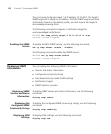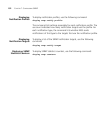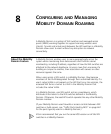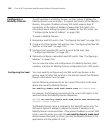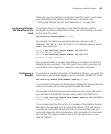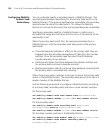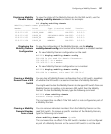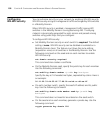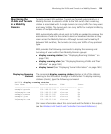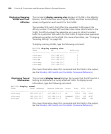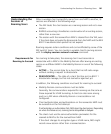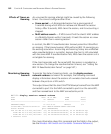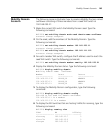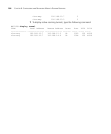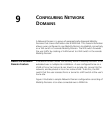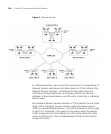
Monitoring the VLANs and Tunnels in a Mobility Domain 159
Monitoring the
VLANs and Tunnels
in a Mobility
Domain
Tunnels connect WX switches. Tunnels are formed automatically in a
Mobility Domain to extend a VLAN to the WX switch that a roaming
station is associated with. A single tunnel can carry traffic for many users
and many VLANs. The tunnel port can carry traffic for multiple VLANs by
means of multiple virtual ports.
MSS automatically adds virtual ports to VLANs as needed to preserve the
associations of users to the correct subnet or broadcast domain as they
roam across the Mobility Domain. Although tunnels are formed by IP
between WX switches, the tunnels can carry user traffic of any protocol
type.
MSS provides the following commands to display the roaming and
tunneling of users within their Mobility Domain groups:
display roaming station (See “Displaying Roaming Stations” on
page 159.)
display roaming vlan (See “Displaying Roaming VLANs and Their
Affinities” on page 160.)
display tunnel (See “Displaying Tunnel Information” on page 160.)
Displaying Roaming
Stations
The command display roaming station displays a list of the stations
roaming to the WX switch through a VLAN tunnel. To display roaming
stations (clients), type the following command:
WX1200# display roaming station
User Name Station Address VLAN State
---------------------- ----------------- --------------- -----
example\geetha 192.168.15.104 vlan-am Up
nh@example.com 192.168.15.1990 vlan-am Up
example\tamara 192.168.11.200 vlan-ds Up
example\jose 192.168.14.200 vlan-et Up
hh@example.com 192.168.15.194 vlan-am Up
(For more information about this command and the fields in the output,
see the Wireless LAN Switch and Controller Command Reference.)



